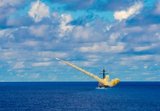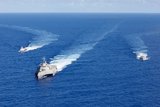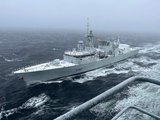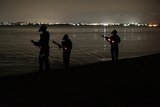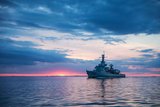South Korea launches its first missile-capable submarine
South Korea launched its first ever missile-capable attack submarine on 14 September, despite a recent diplomatic thaw with the nuclear-armed North.
The $700 million, 3,000t Dosan Ahn Chang-ho submarine is capable of firing both cruise and ballistic missiles, and it is the first of three planned diesel-electric boats to go into service in the next five years.
It represented a ‘leap forward in the country's’ defence industry, South Korean President Moon Jae-in told the audience at a launch ceremony at the Daewoo shipyard where it was designed and built.
Moon will head to Pyongyang in the week of 17 September for a third summit with the North's leader Kim Jong-un, as US-led efforts to persuade Pyongyang to give up its nuclear weapons have stalled.
Moon said: ‘We have set off on a grand journey toward the denuclearisation of the Korean peninsula. But peace is not given gratuitously. Peace through power is the unwavering security strategy of this government.’
The new submarine is fitted with six vertical-launch tubes and features indigenous sonar and combat management systems.
Aside from the new vessels, South Korea has an existing fleet of 18 smaller submarines, all built in cooperation with Germany.
According to the defence ministry, the North has 70 ageing submarines and submersibles, and Yonhap news agency reported that it has also developed a new 2,500t submarine fitted with a vertical-launch system.
More from Naval Warfare
-
![Maritime defence in the Mediterranean faces challenges from vulnerable land power]()
Maritime defence in the Mediterranean faces challenges from vulnerable land power
As an indispensable energy crossroads, the Mediterranean is at serious risk from grey zone disruption. As navies increasingly employ AI data centres, what happens when cutting-edge defence technologies rely on the very infrastructure most susceptible to hybrid tactics?
-
![US Navy to conduct an experimentation campaign with emerging tech in 2026 and 2027]()
US Navy to conduct an experimentation campaign with emerging tech in 2026 and 2027
The Technology Operational Experimentation Events will inform future requirements as the US Navy looks for innovative solutions across three key operational domains.
-
![Future Canadian Continental Defence Corvette will provide “Halifax-equivalent capabilities”]()
Future Canadian Continental Defence Corvette will provide “Halifax-equivalent capabilities”
Although the CDC project is still in its early stages, the Canadian Department of National Defence already has some requirements for the future platforms.
-
![US Navy to acquire micro-uncrewed underwater vehicles for ISR and coastal data collection]()
US Navy to acquire micro-uncrewed underwater vehicles for ISR and coastal data collection
The Naval Supply Systems Command is seeking authorised resellers of JaiaBot uncrewed underwater vehicles and multivehicle pods. The platforms will support undergraduate education at the US Naval Academy.
-
![NATO tests use of “undetectable, jam-proof” laser communication in maritime scenarios]()
NATO tests use of “undetectable, jam-proof” laser communication in maritime scenarios
As part of its effort to better prepare its capabilities for operations in contested and congested scenarios, NATO evaluated a Lithuanian ship-to-ship terminal designed to not be susceptible to enemy interference.







